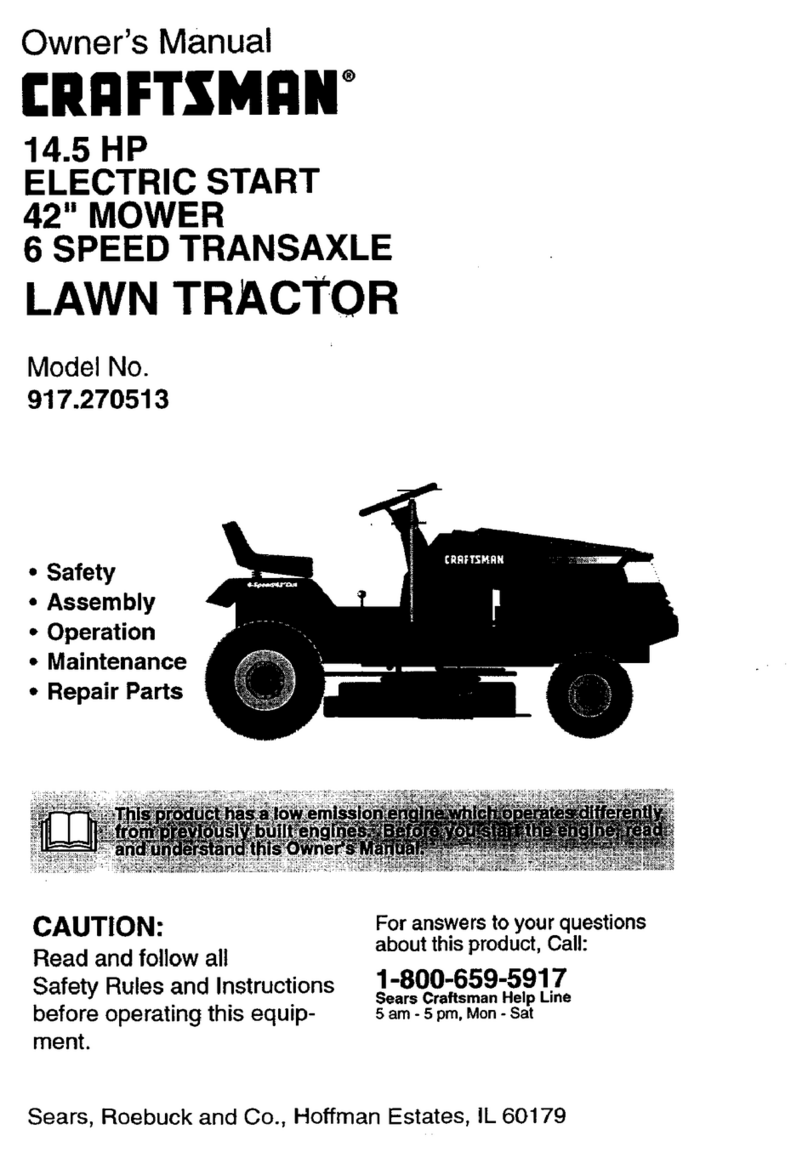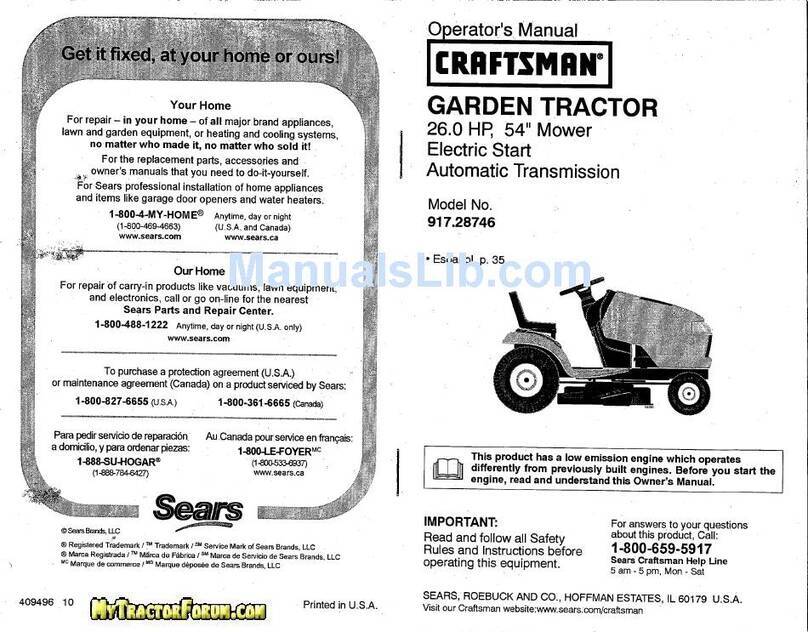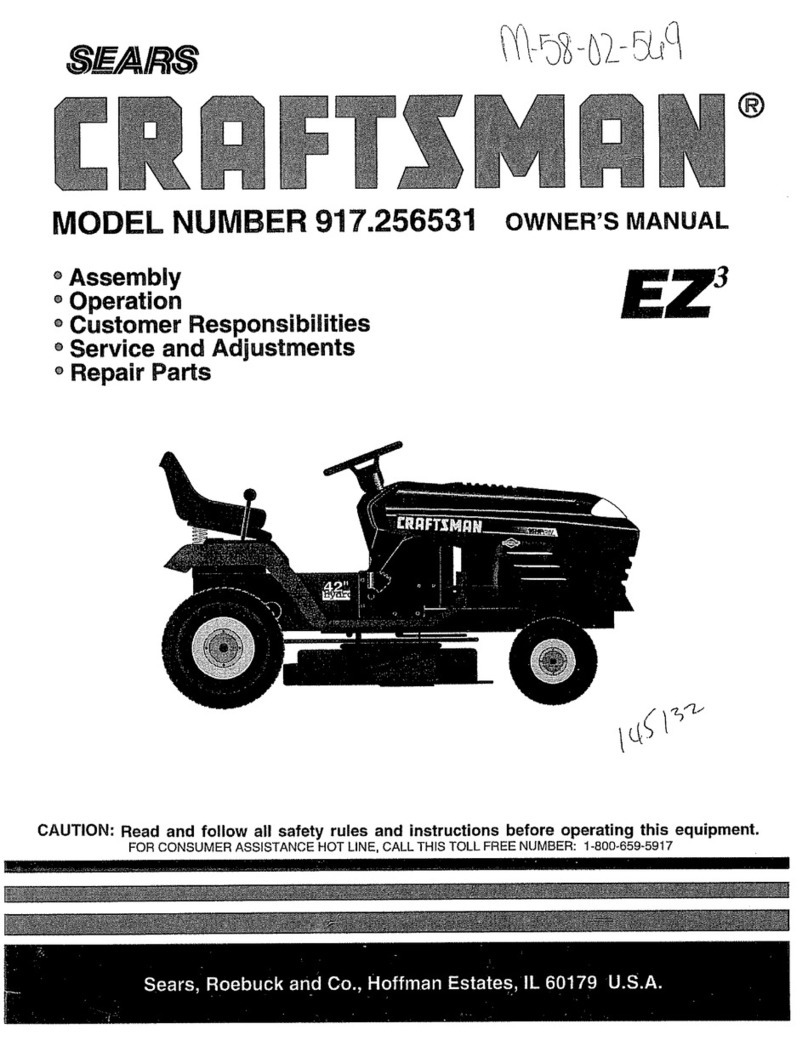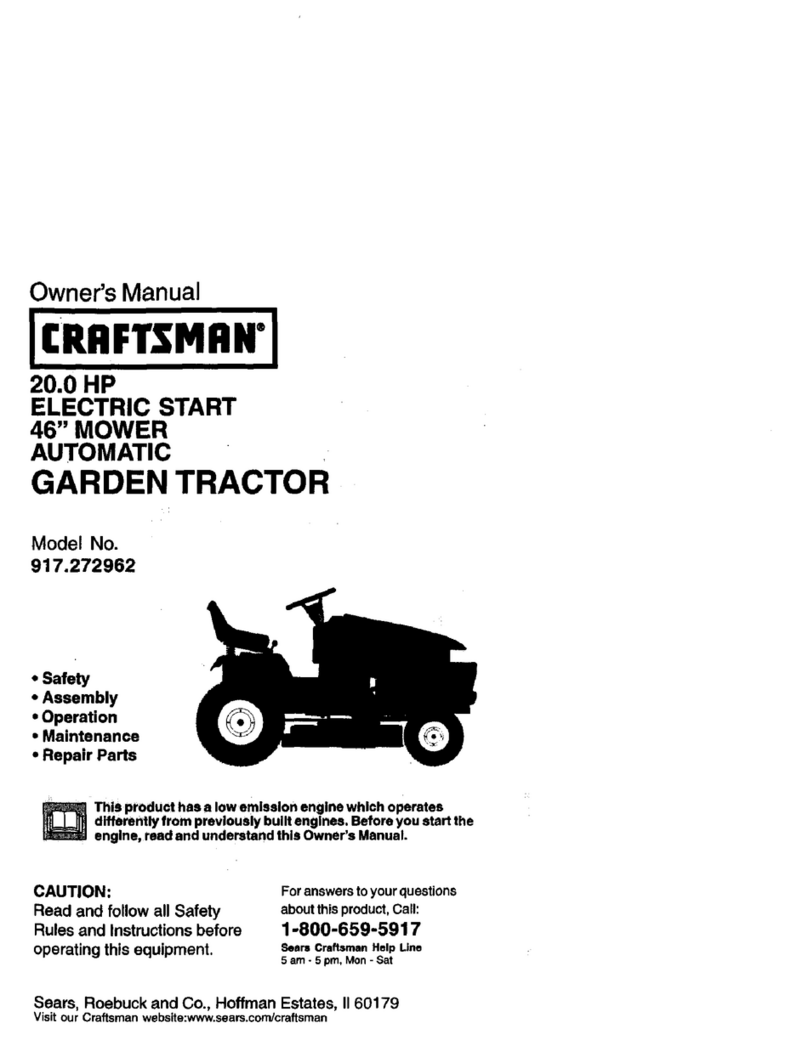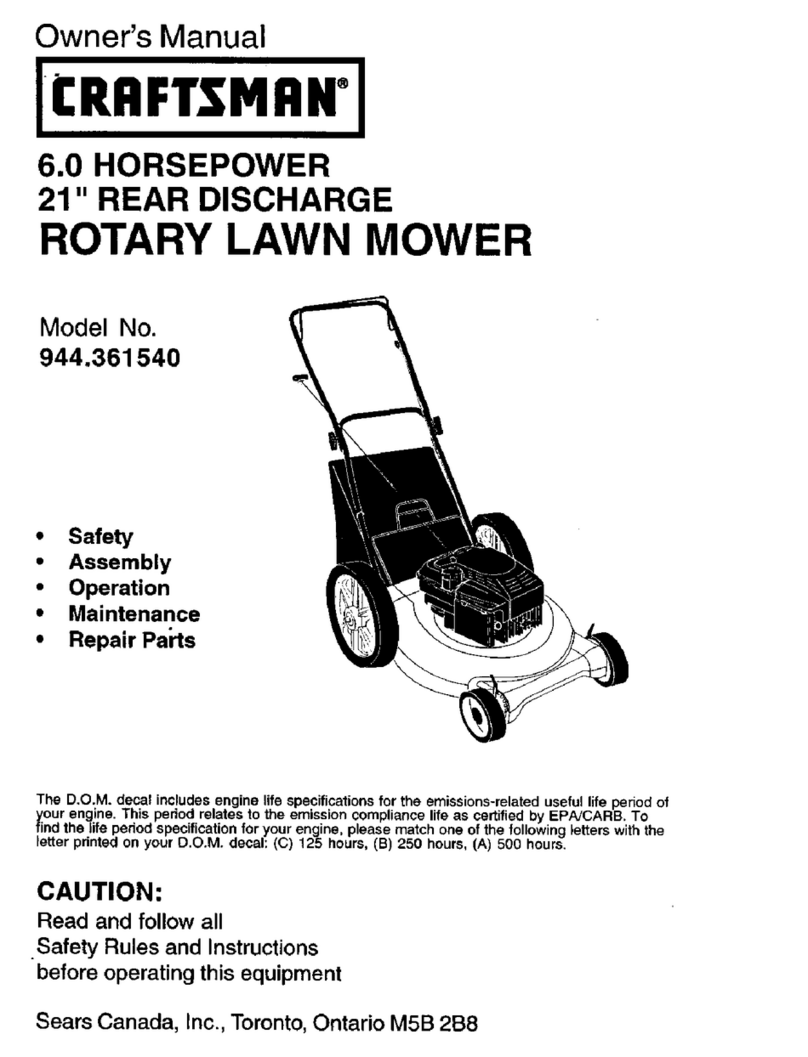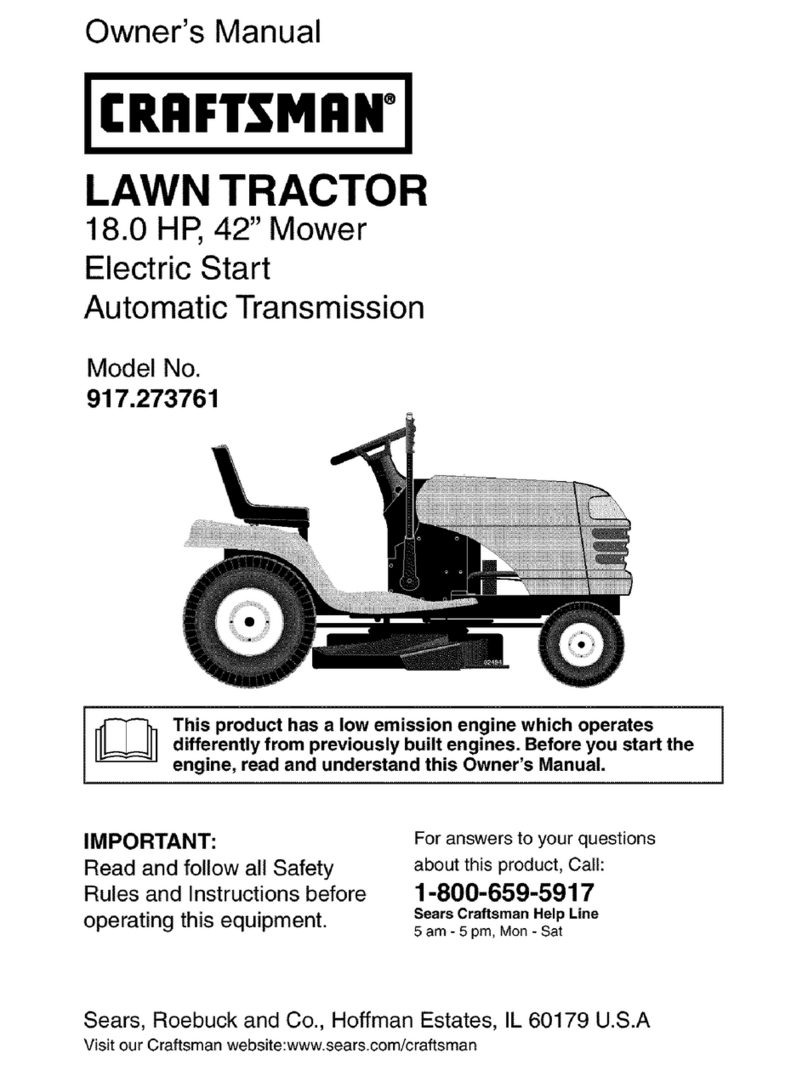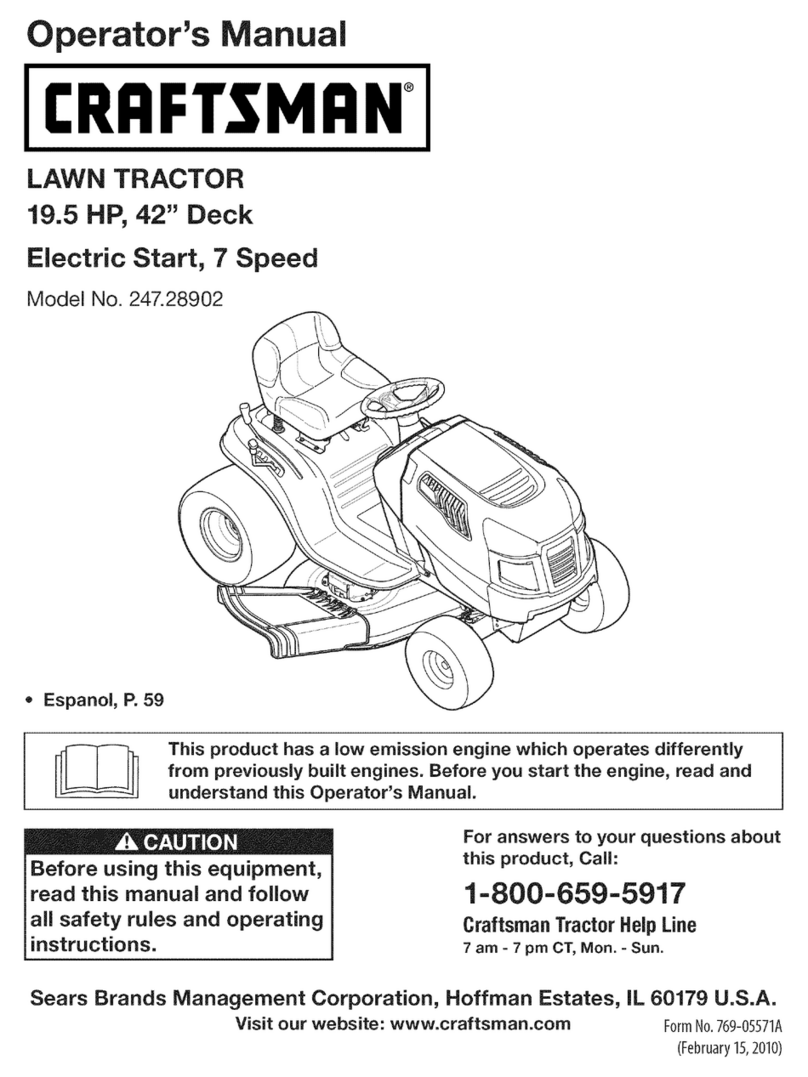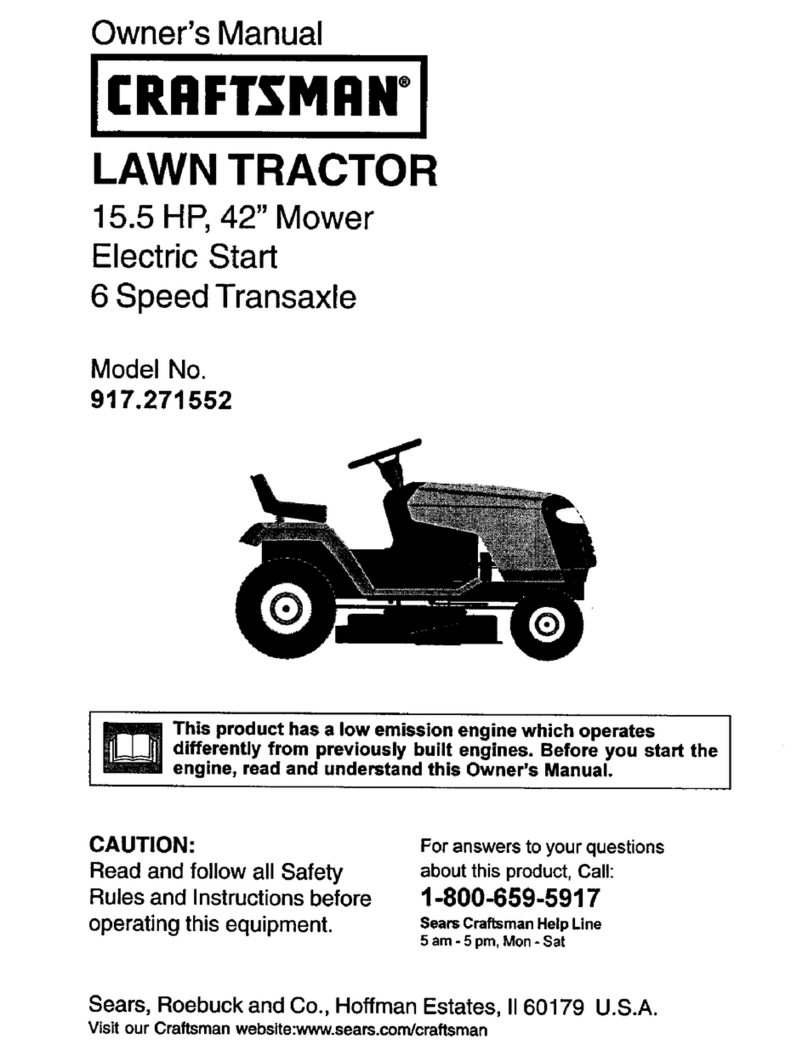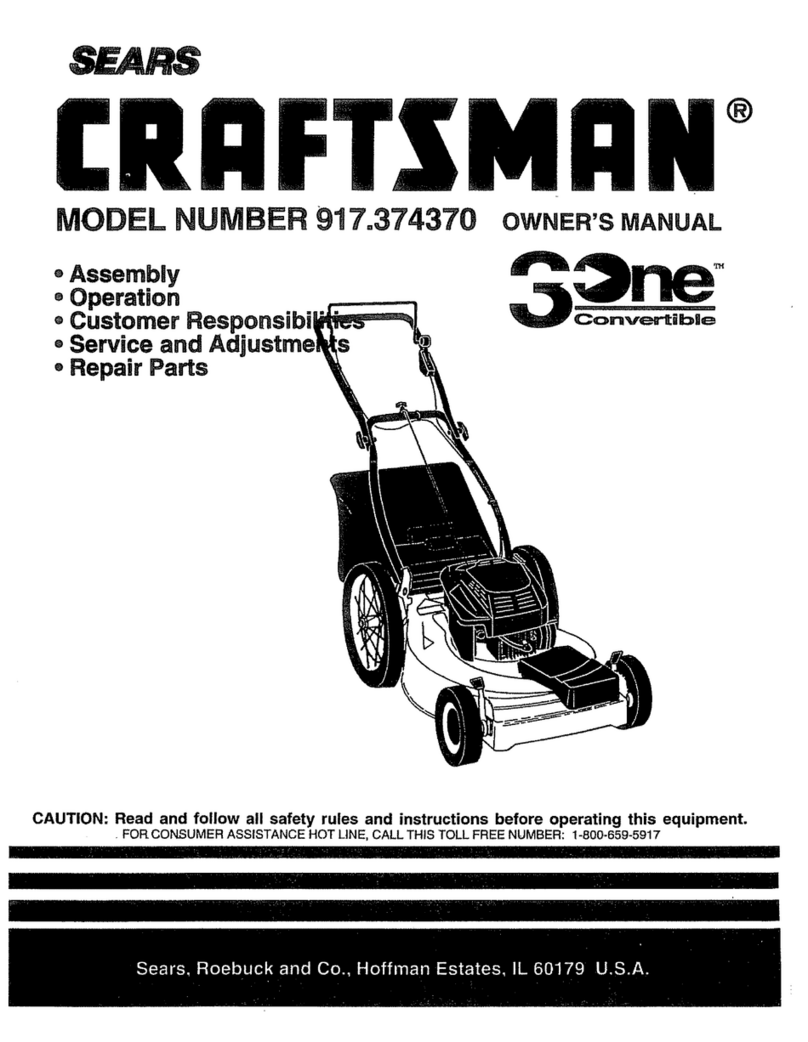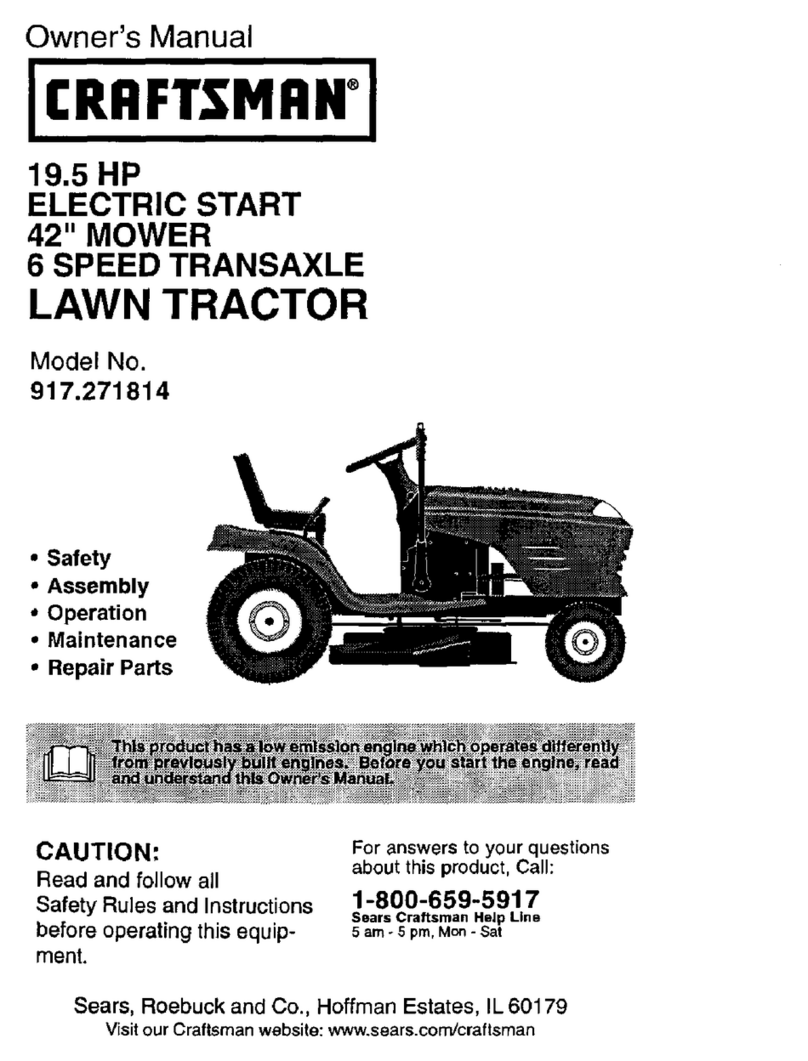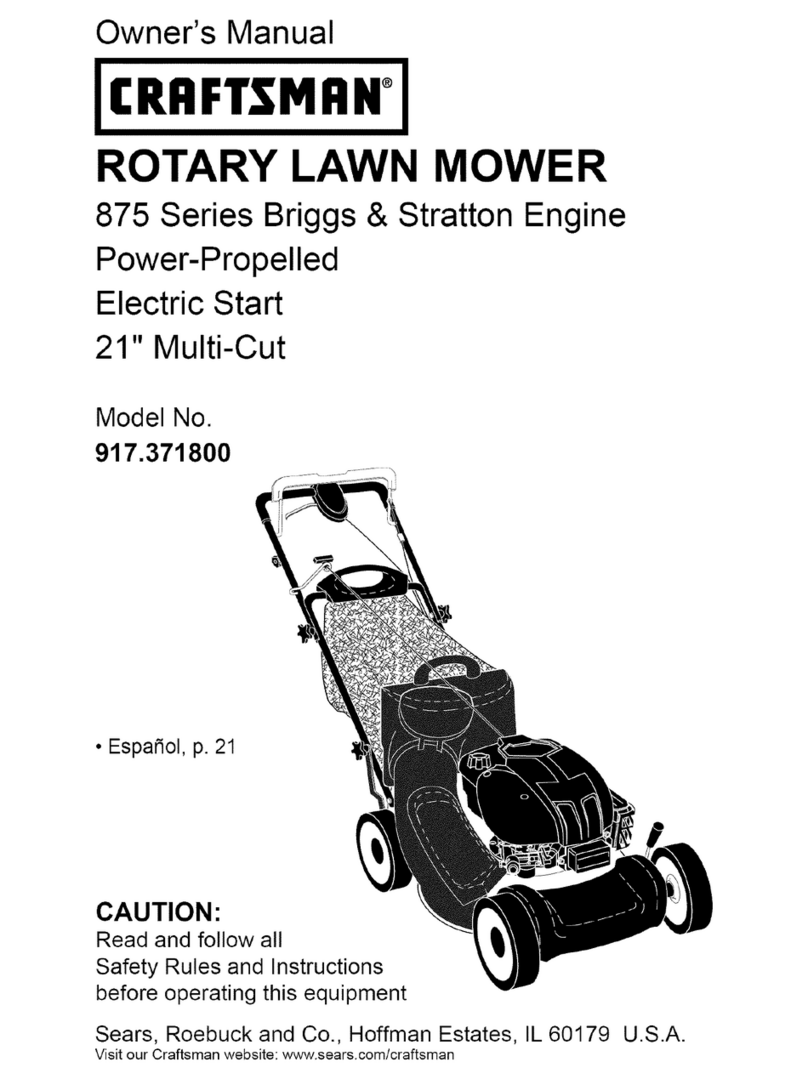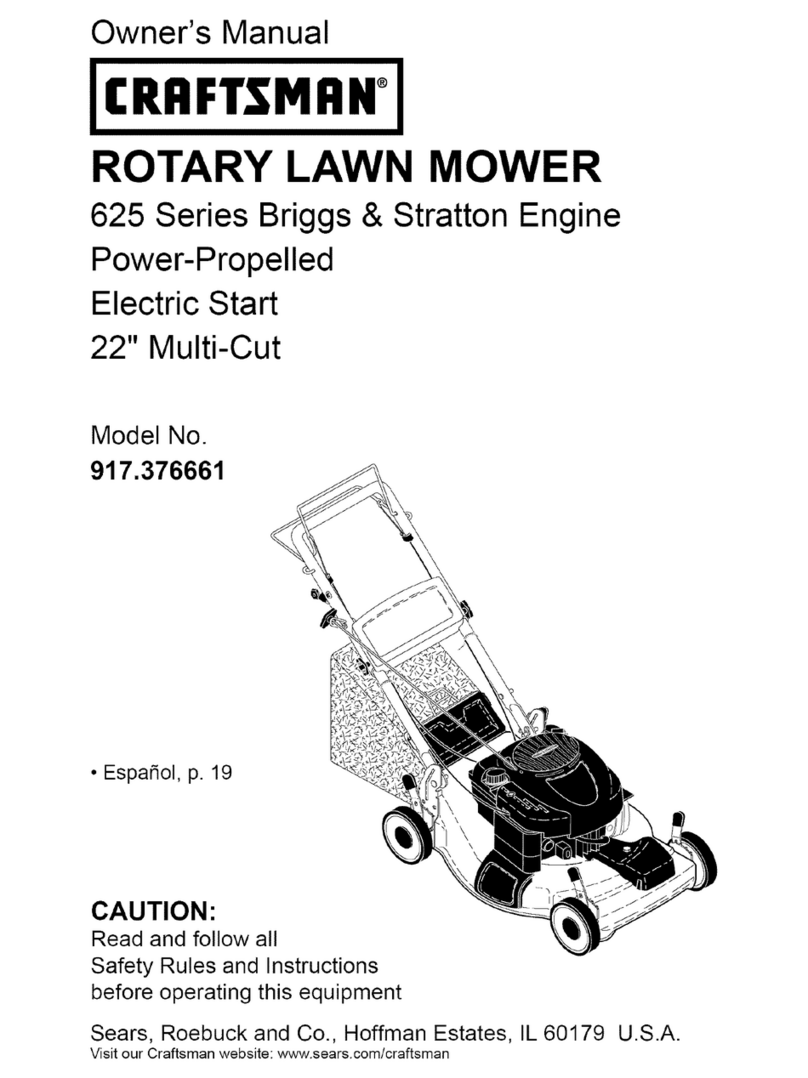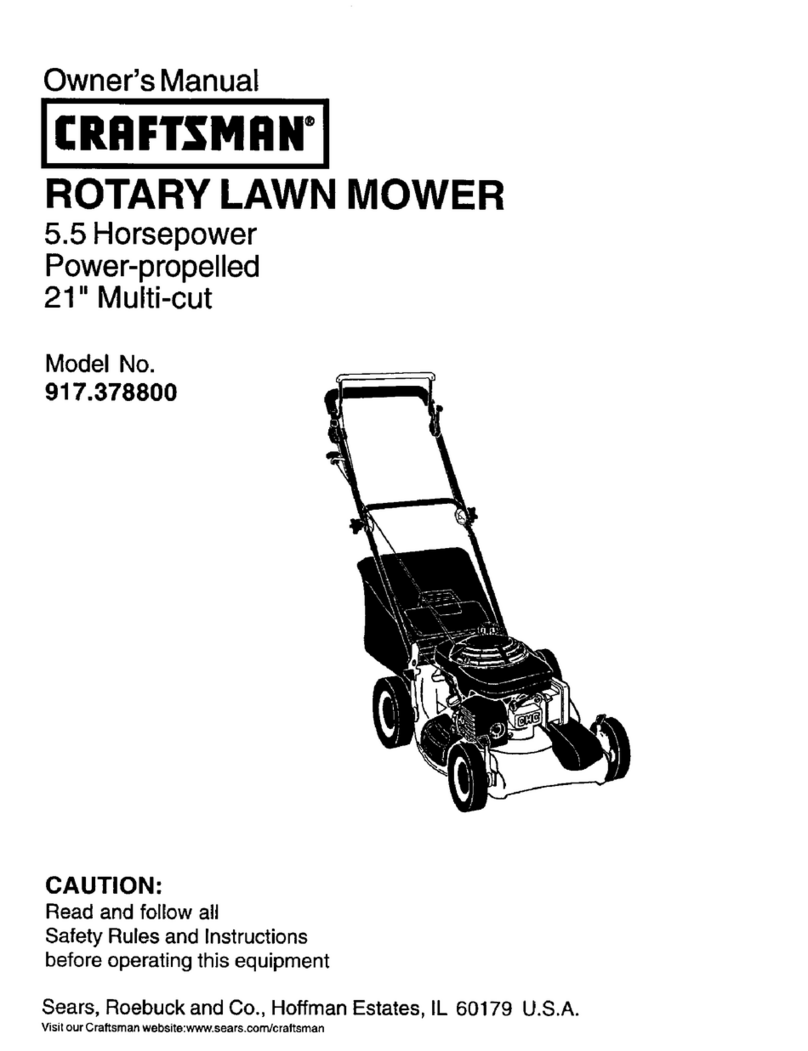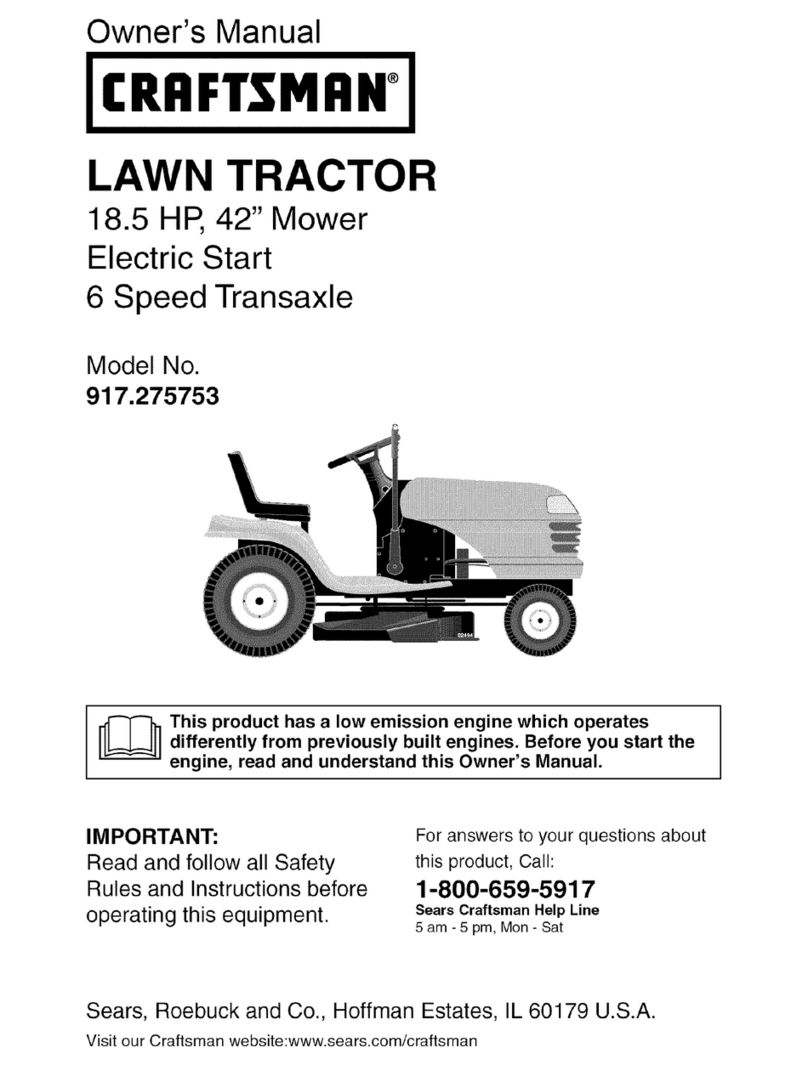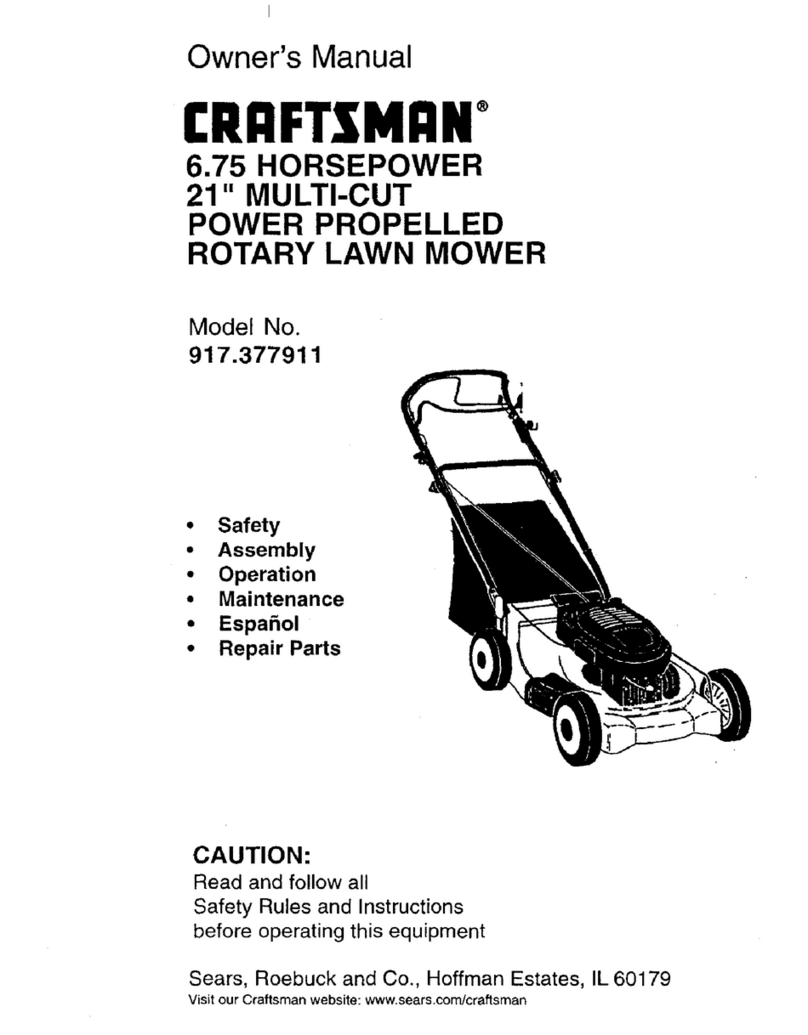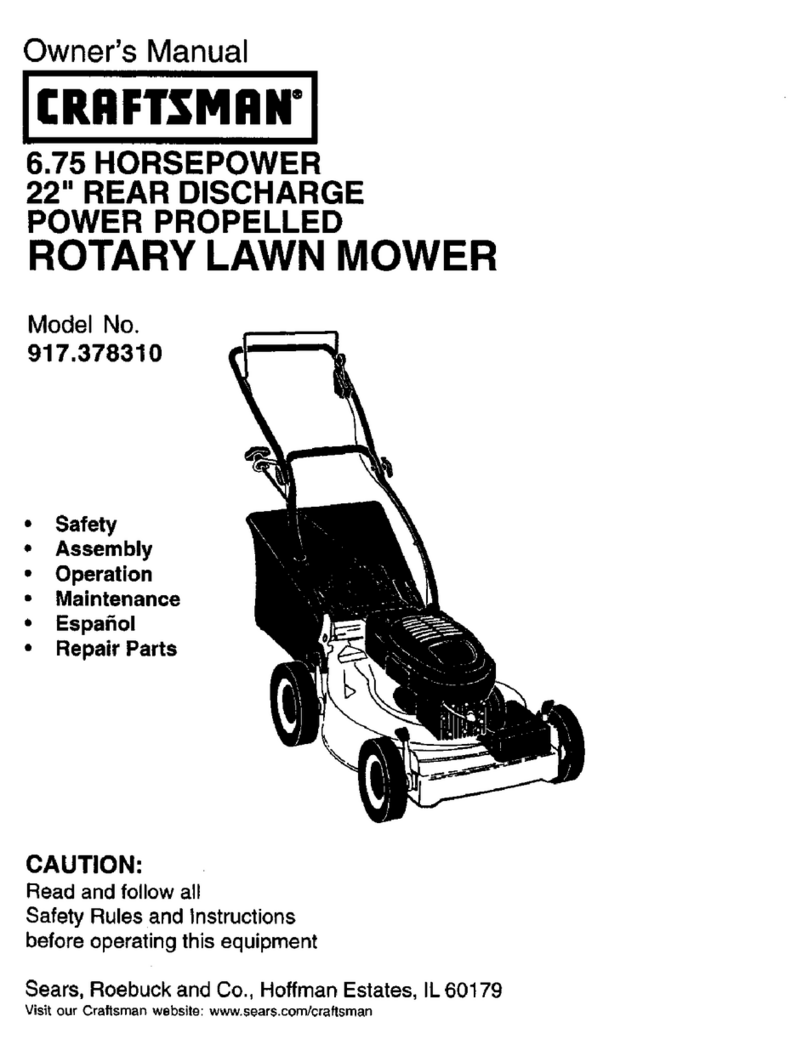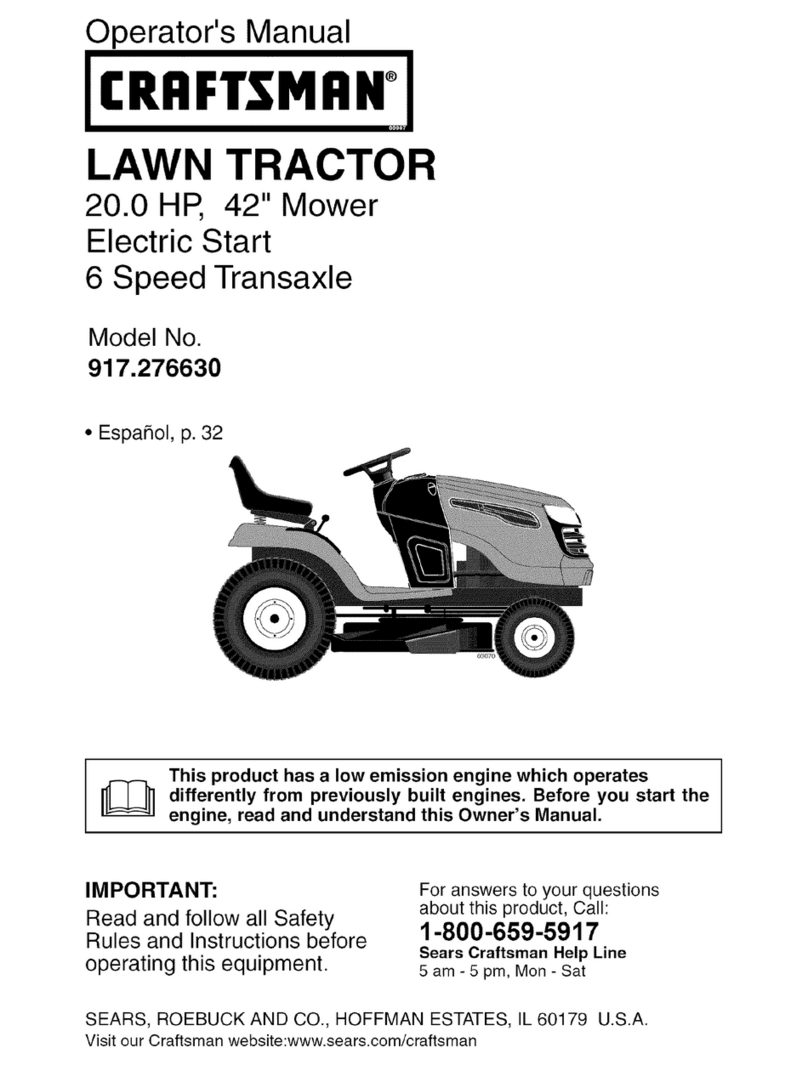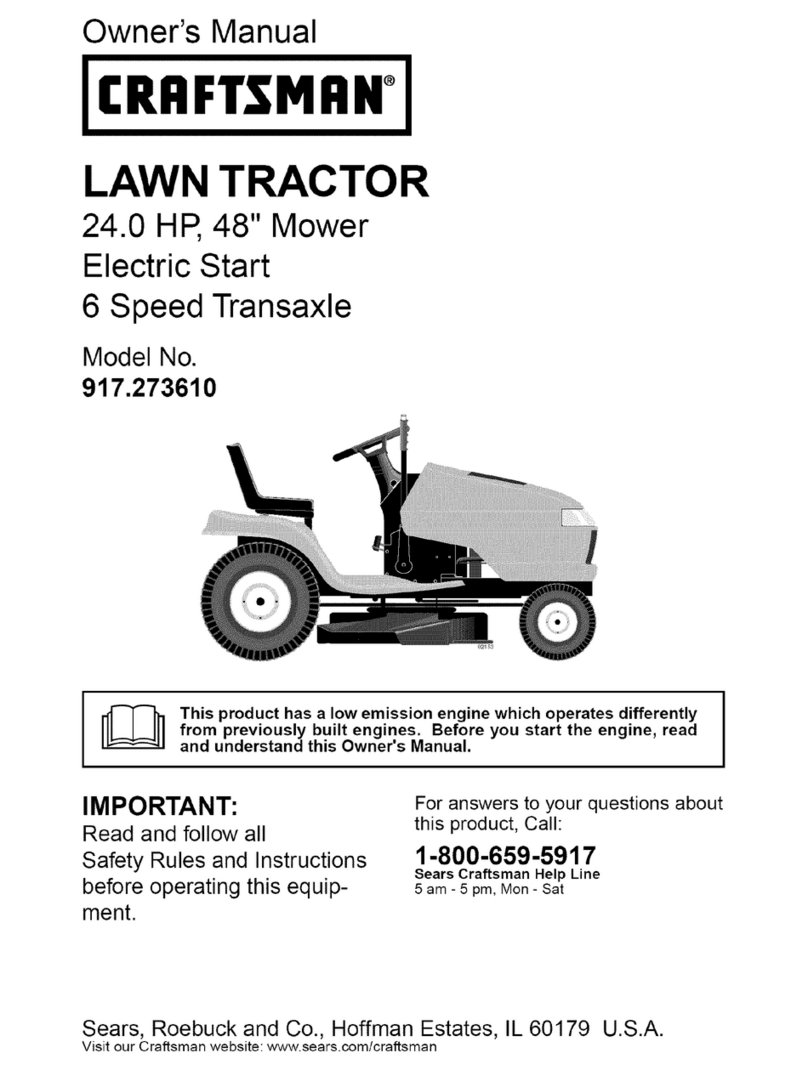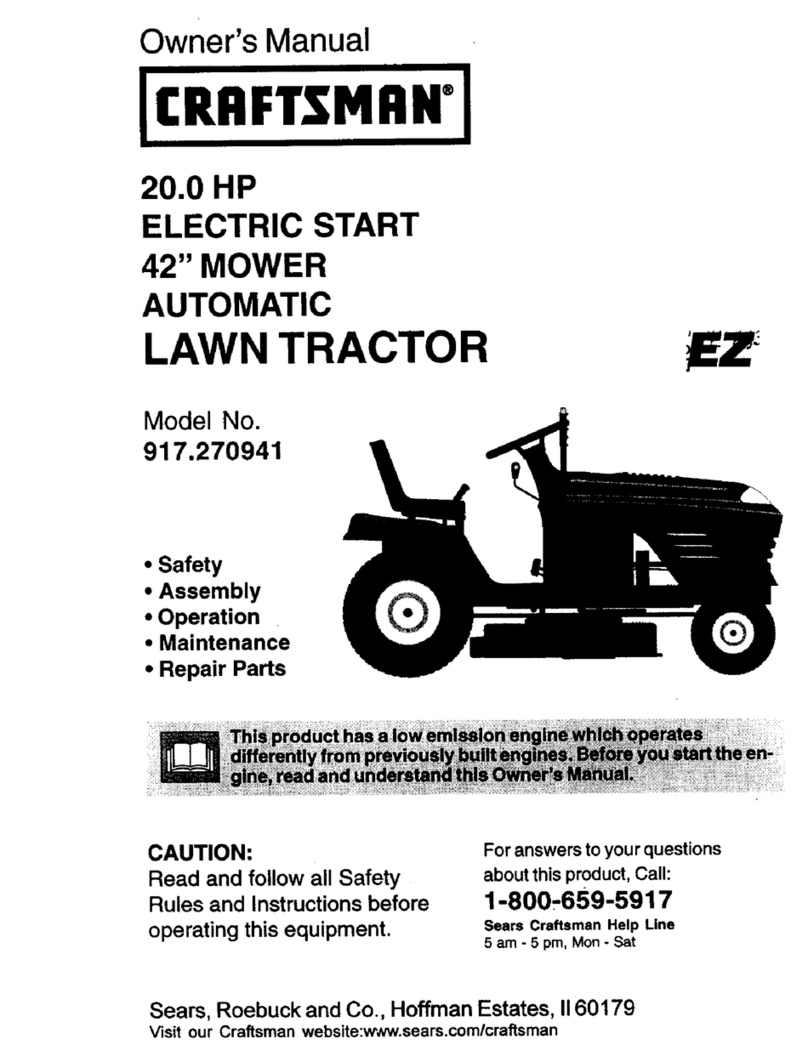IMPORTANT:Thiscuttingmachineiscapableof amputatinghandsandfeet andthrow-
ingobjects.Failureto observethe followingsafetyinstructionscould resultin serious
injuryordeath.
_WARNmNG: Inorderto preventac-
cidentalstartingwhen settingup,trans-
porting,adjustingor makingrepairs,
alwaysdisconnectsparkplugwire and
placewirewhereitcannotcontactspark
ug.
WARNmNG:Do notcoastdowna hill in
neutral,you maylosecontrolofthe tractor.
_I:_WARNmNG: Tow only the attachments
that are recommended by and comply with
specifications of the manufacturer of your
tractor. Use common sense when towing.
Operate only at the lowest possible speed
when on a slope. Too heavy of a load,
while on a slope, is dangerous. Tires can
lose traction with the ground and cause
_lu to lose control of your tractor.
WARNING: Engine exhaust, some of its
constituents, and certain vehicle compo-
nents contain or emit chemicals known to
the State of California to cause cancer and
birth defects or other reproductive harm.
_IKWARNmNG: Battery posts, terminals
and related accessories contain lead and
lead compounds, chemicals known to the
State of California to cause cancer and
birth defects or other reproductive harm.
Wash hands after handling.
L GENERAL OPERATION
°Read, understand, and follow all instruc-
tions in the manual and on the machine
before starting.
,Only allow responsible adults, who are
familiar with the instructions, to operate
the machine.
*Clear the area of objects such as rocks,
toys, wire, etc., which could be picked
up and thrown by the blade.
,Be sure the area is clear of other people
before mowing. Stop machine if anyone
enters the area.
,Never carry passengers.
*Do not mow in reverse unless abso-
lutely necessary. Always look down and
behind before and while backing.
,Be aware of the mower discharge direc-
tion and do not point it at anyone. Do
not operate the mower without either
the entire grass catcher or the guard in
place.
°Slow down before turning.
,Never leave a running machine unat-
tended. Always turn off blades, set
parking brake, stop engine, and remove
keys before dismounting.
,Turn off blades when not mowing.
,Stop engine before removing grass
catcher or unclogging chute.
,Mow only in daylight or good artificial
light.
,Do not operate the machine while under
the influence of alcohol or drugs.
,Watch for traffic when operating near or
crossing roadways.
,Use extra care when loading or un-
loading the machine into a trailer or
truck.
,Data indicates that operators, age 60
years and above, are involved in a large
percentage of riding mower-related in-
juries. These operators should evaluate
their ability to operate the riding mower
safely enough to protect themselves and
others from serious injury.
*Keep machine free of grass, leaves or
other debris build-up which can touch
hot exhaust /engine parts and burn. Do
not allow the mower deck to plow leaves
or other debris which can cause build-
up to occur. Clean any oil or fuel
spillage before operating or storing the
machine. Allow machine to cool before
storage.
H. SLOPE OPERATmON
Slopes are a major factor related to loss-
of-control and tipover accidents, which can
result in severe injury or death. All slopes
require extra caution. If you cannot back
up the slope or if you feel uneasy on it, do
not mow it.
3
